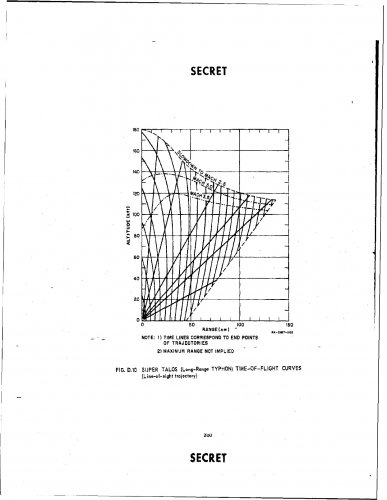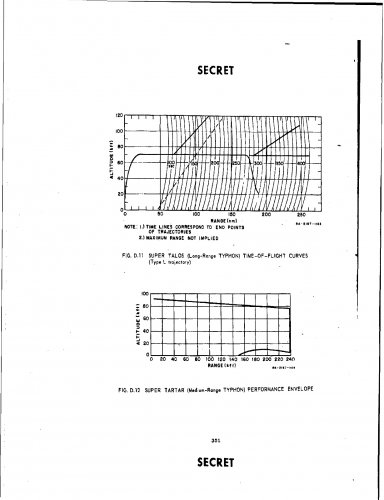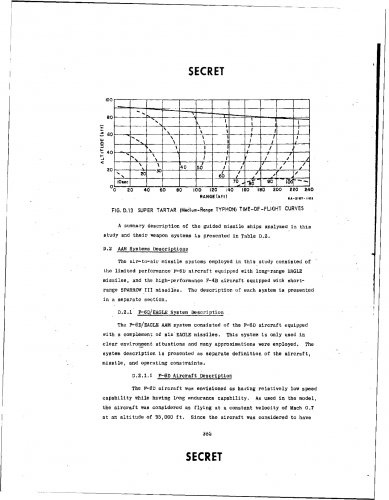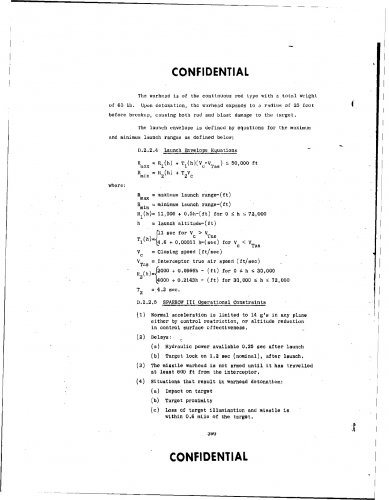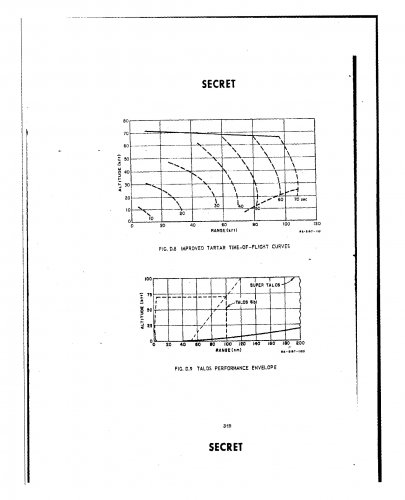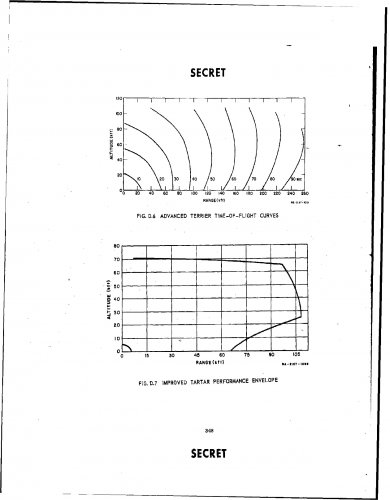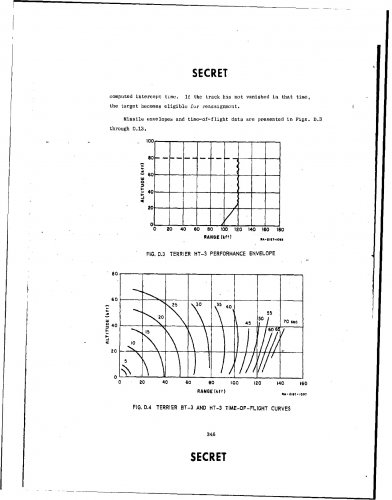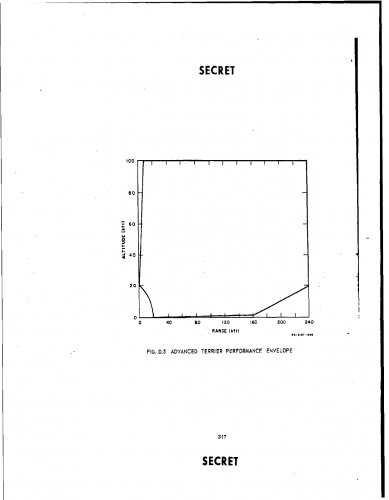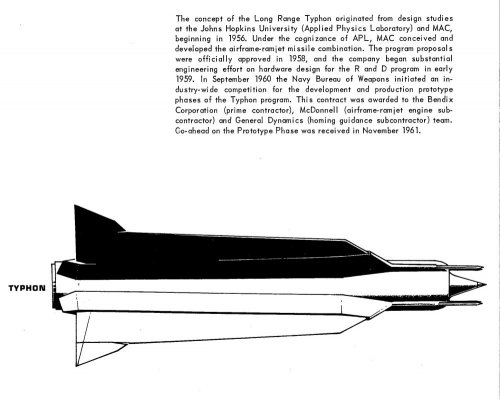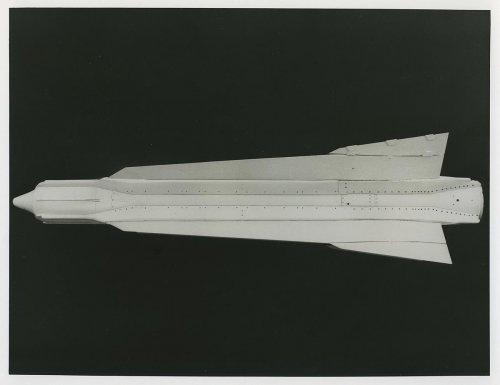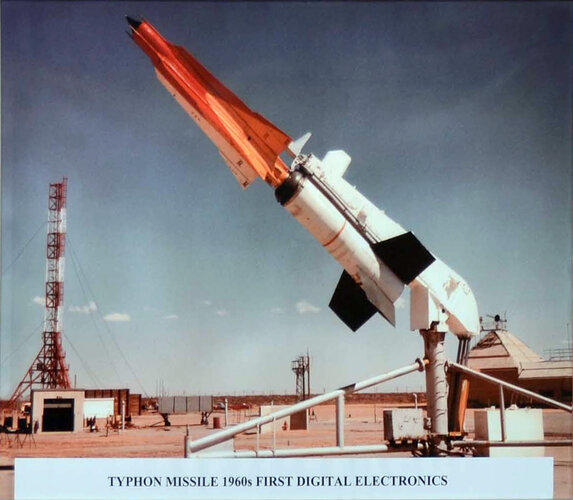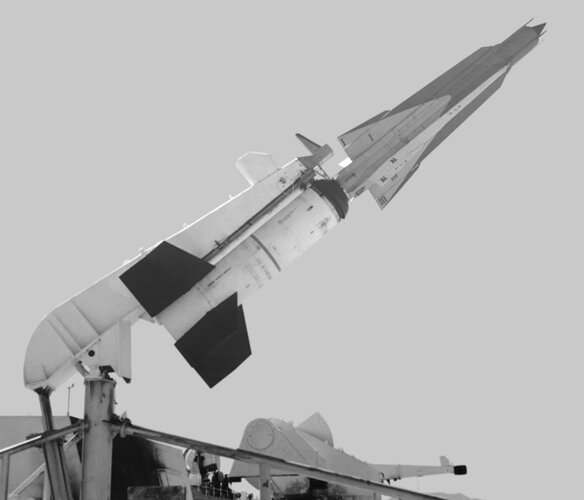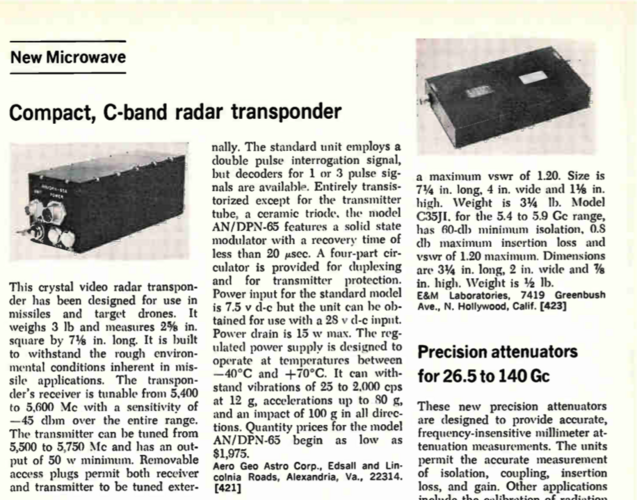There are a couple of threads about Typhon already on this site:
http://www.secretprojects.co.uk/forum/index.php/topic,690.0.html
http://www.secretprojects.co.uk/forum/index.php/topic,3275.0.html
Included below is an essay I wrote about a decade ago that I think encapsulates the main elements of the system, why it was developed, and why it didn't work as planned. It's a bit dated and could use some additional research (it doesn't deal as much with the missile as with the radar and associated combat system), but I hope it's a good overview. (If you've seen it before on Usenet, I've fixed a couple of typos and infelicitous phrases, but it's otherwise the same.)
*********************************************************
The Typhon Weapon System
By the late 1950s, it was becoming apparent that the Navy's first generation of surface-to-air missiles (the So called 3-T family, Talos, Terrier, and Tartar) were not going to be well suited to a range of new threats anticipated to enter service by the late 1960s or early 1970s. These threats included submarine-launched anti-ship missiles and large air raids with standoff missile shooters and jammers. A new system was needed. It would have to engage bombers and jammers at long range, which implied a large missile, but also handle pop-up threats at short range, which implied little reaction time and the ability to engage many targets at once.
To meet the requirement that the new system be able to handle large numbers of targets, it was clear that the traditional rotating radars would have to
go, as would the practice of using one designator for each track the system engaged. Therefore, any new system would have to adopt some form of
electronic scanning. The search radar would probably also have to perform fire control duties.
The Radar:
The core of the Typhon system was its novel SPS-59 radar. Unlike previous radars, it had no rotating antennas. Rather it used a large fixed spherical
emitter array and thee smaller receive arrays spaced around the base of the transmitting antenna. It operated in C-band, a compromise between
long-range search and fire control requirements, but really not optimal for either role. The frequency selection made a planar array (a la AEGIS)
impractical, because the existing C-band phase shifters of the era were large and inefficient in transmitting energy.
Instead, the transmitting system was based around a Luneberg lens beamformer, which allowed the system to switch beams very quickly without a
mechanical training antenna. A Luneberg Lens has the characteristic of transforming a signal point signal injected into it one side into a flat
wavefront on the other. To transmit a beam in a specific direction, the system would activate a single emitter directed into the lens, which would
send a signal through the lens to a number of receiver horns on the other side. These signals would then be switched through a bank of amplifiers and
then switched again to send them to the appropriate traveling wave tube emitters in the antenna. Each of these elements had to be carefully
connected; there could be no more than 5mm difference in the lengths of the various signal paths or the signals would be unacceptably distorted at the
antenna. (Receive characteristics are not so widely quoted, but the principal was the same.)
Two version of the radar were planned, one for destroyers and one for cruisers. The destroyer version was to have 3,600 elements in the
beamformer, 900 amplifiers, and 3,400 elements in the antenna. The cruiser version was to have 10,800 elements in the beamformer, 2,700 amplifiers, and 10,200 elements in the antenna.
In the event, the initial tests of a much-simplified version aboard Norton Sound showed the system was not going to work. Reliability and signal processing software were both problematic, but the major problem was that the system was losing far too much of the signal strength in the processing process. Consequently, in some tests, maximum range was less than the selected frequency's minimum range to resolve targets.
The Missiles:
There were two missiles associated with Typhon. They had some common guidance elements but were largely unrelated.
Typhon (Medium Range) was initially called Super Tartar and was based closely on the improved Tartar then under development but with guidance
adapted to Typhon. It was meant mainly to deal with short-range pop-up threats and leakers that got past the outer layer. Like Tartar, Typhon MR was
13.5 inches in diameter and about 15 feet long. It was to have a maximum range of 40nm and a max altitude of 80,000 feet (minimum 1.5nm and 50 feet), with a reaction time of 10 seconds or less. MR was to be compatible with the fast-firing Mk13 launcher.
Typhon (Long Range) was an entirely new missile meant to break up raids at long range and engage standoff missile shooters and jammers. Initially
called Super Talos, it was nevertheless a roughly Terrier-sized two-stage missile. The booster was a conventional solid rocket motor; the upper stage
was ramjet powered, 16 inches in diameter and about 15 feet long. Typhon LR went through a couple of configurations, starting with a tapered delta wing and a center inlet and ending with narrow-span wings with ramjet inlets at the wing roots. * It had a max range of 200nm and a max altitude of 100,000 feet (minimum 3nm and 50 ft), at a speed of about Mach 4. Typhon LR was supposed to be compatible with the Terrier's Mk10 launcher with minimal modifications.
Both missiles shared a common warhead design, which was to have interchangeable conventional and nuclear versions.
Guidance was also the same for both systems. For most of the flight, the SPG-59 radar tracked the missile and sent steering commands to get the
missile into position for terminal homing. Terminal homing was by track-via-missile; the missile seeker receiving reflected energy from the SPG-59 and downlinking the resulting signal back to the ship, which processed it and sent back steering commands. (Because it was also a search radar, SPG-59 used pulsed signals, which could not be processed effectively in a small missile with the technology of the day). This worked, but imposed rather significant demands on the radar, which was asked to also serve as a data link. The system could control 20 missiles in flight, but no more than 10 in terminal homing.
Conclusion:
Typhon was a noble effort, but the technical approach taken had too many inherent problems, from the compromised frequency selection to the
mechanical complexity of the construction.
Given the precision require and the sheer number of elements involved, one can immediately see that building the radar was challenging to put it
kindly. Most likely, it would never have been affordable, even if the signal processing and loss problems were overcome.
Some elements of the design did contribute to the development of AEGIS (most notably the general idea of electronically scanned radar and the decision to provide terminal guidance only in the late stage of the missile's flight.).
But in large, AEGIS built on Typhon's lessons of how not to do things. Thus, the decision to adopt planar phased arrays, continuous-wave terminal
illumination, and S-band radars were all based on the realization that Typhon's approach to the same issues was unsuccessful.
Sources:
CAPT Bryce D. Inman, USN, "From Typhon to AEGIS - The Issues and Their Resolution," _Naval Engineer's Journal_, May 1988
Milton Gussow, "Typhon: A Weapon System Ahead of its Time," _Naval Engineer's Journal_, July 1997
Norman Friedman, _U.S. Naval Weapons_, Naval Institute Press, 1983

